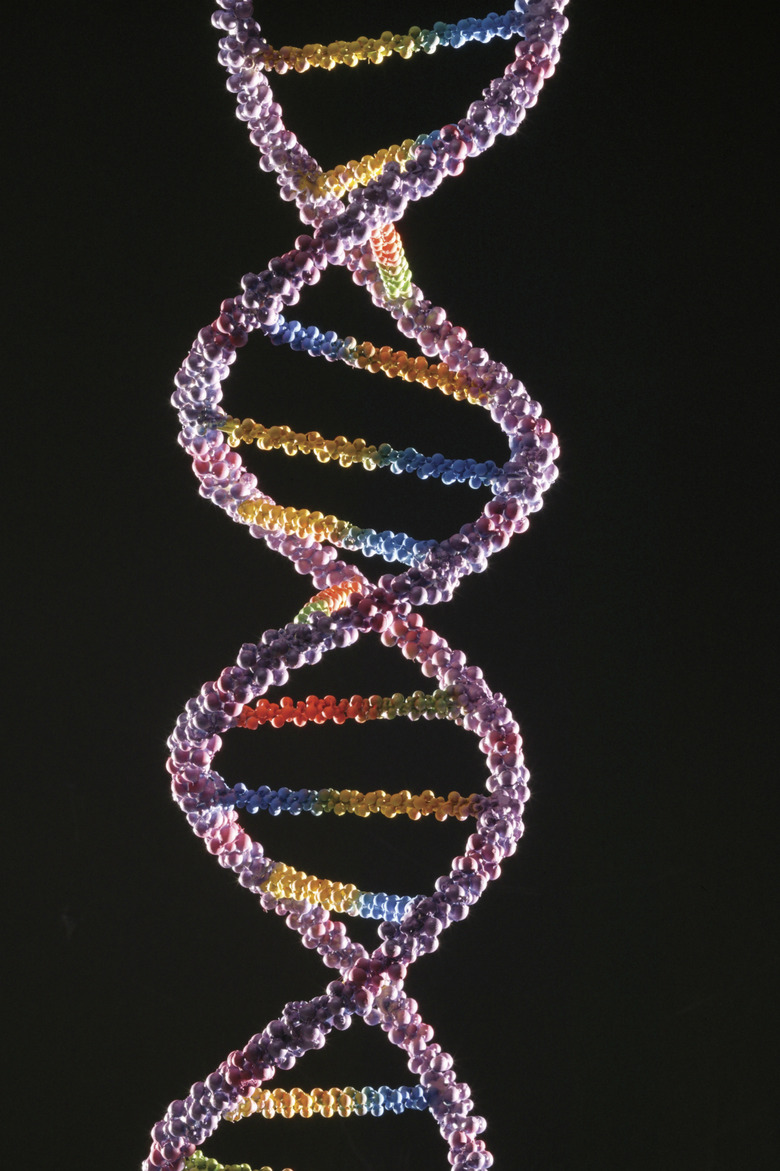How A Sample Of DNA Is Collected And Prepared For Study
Before they can sequence DNA or alter it through genetic engineering, scientists must first isolate it. This might seem like a difficult task, since cells contain a wide variety of other compounds like proteins, fats, sugars and small molecules. Fortunately, biologists can make use of DNA's chemical properties to separate DNA from these contaminants and prepare it for further study. This process is called DNA extraction.
Cell Lysis
Cell Lysis
There are many different techniques employed for DNA extraction. The one used by an individual lab depends on the type of experiment to be performed and how pure the DNA needs to be. Scientists generally start with a sample containing cells — a tissue or blood sample, for instance — and break the cells open, or lyse them. There are a variety of ways you can lyse cells. Adding a detergent will cause them to come apart, as will subjecting them to high-frequency sound waves. Alternatively, mixing the sample with glass beads and vibrating it rapidly will physically break the cells apart and release their contents.
Quick and Dirty Approaches
Quick and Dirty Approaches
If high purity is not required, scientists may add an enzyme called proteinase K to break down most of the proteins in the sample then use it as-is. This technique is very dirty, however, since most of the contaminants are still present, so it's only suitable if speed is a priority and purity is no issue. Another quick and dirty approach is to remove proteins by increasing the salt concentration by adding salts like ammonium or potassium acetate to force the proteins to precipitate. This technique too is fairly dirty since many other contaminants are still present.
Phenol-Chloroform Extraction
Phenol-Chloroform Extraction
Another approach is to lyse the cells with detergent then mix the solution with isoamyl alcohol, chloroform and phenol. The solution then separates into two layers. Proteins end up in the upper organic layer, while DNA remains in the lower aqueous layer. This technique requires careful control of salt concentration and pH for good results. It's time-consuming, and both phenol and chloroform are highly toxic chemicals. Consequently, while phenol-chloroform extractions were once routine, other techniques have become more popular in recent years.
Anion-Exchange Chromatography
Anion-Exchange Chromatography
Anion-exchange chromatography offers higher purity and more consistent results than phenol-chloroform extraction. A tube or column is packed with small particles that have positively charged sites on them where a negatively charged molecule or anion can bind. DNA binds to these anion-exchange sites while other contaminants like proteins and RNA are washed off the column. Later, a salt-rich solution is used to pull the DNA off the column.
Kits
Kits
The fastest and perhaps most reliable technique for purifying DNA is the use of a specially manufactured kit. These kits contain silica gel membranes in a tube. The DNA sticks to the membrane while other contaminants are washed away using a series of specially prepared salt solutions that come with the kit. Finally, the DNA is washed off the column with a low-salt solution. These kits are fast, easy to use and offer reproducible results.
Absorbance
Absorbance
Once the DNA has been isolated and resuspended in a pH-controlled buffer solution, the last step is to test its purity. An easy and convenient way to do so is by checking how much ultraviolet light it absorbs at the 260 and 280 nanometer wavelengths. The absorption at 260 nanometers divided by absorption at 280 nanometers should equal 1.8 if the DNA is pure. Measuring absorbance at 260 nanometers also enables you to determine the concentration of the DNA.
References
- Montana State University, Microbial Life: DNA Extraction
- Recombinant DNA Lab Manual, University of California San Diego, pages 43-55, 57-58: Mandy Butler and Chalongrat Noree
Cite This Article
MLA
Brennan, John. "How A Sample Of DNA Is Collected And Prepared For Study" sciencing.com, https://www.sciencing.com/sample-dna-collected-prepared-study-7634/. 24 April 2017.
APA
Brennan, John. (2017, April 24). How A Sample Of DNA Is Collected And Prepared For Study. sciencing.com. Retrieved from https://www.sciencing.com/sample-dna-collected-prepared-study-7634/
Chicago
Brennan, John. How A Sample Of DNA Is Collected And Prepared For Study last modified August 30, 2022. https://www.sciencing.com/sample-dna-collected-prepared-study-7634/
